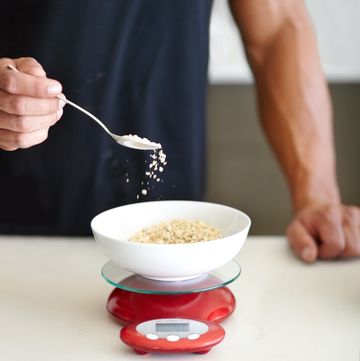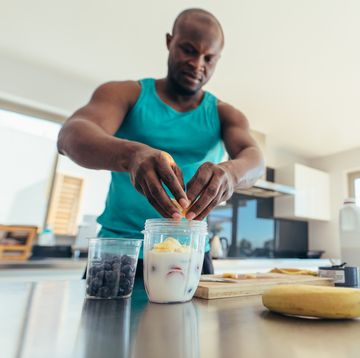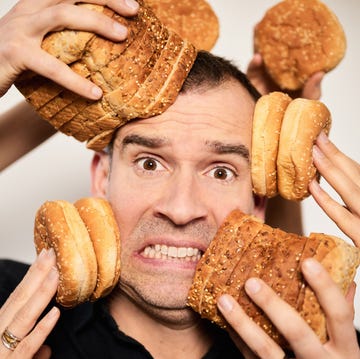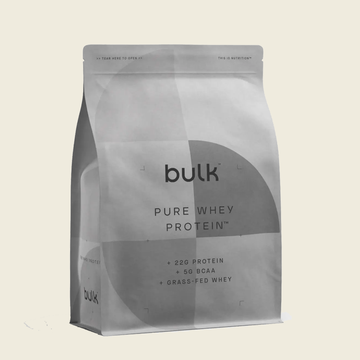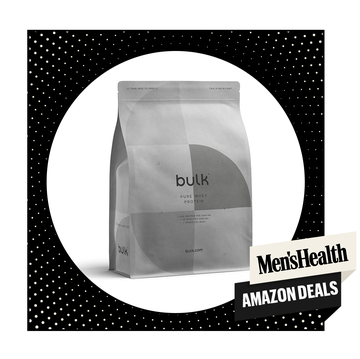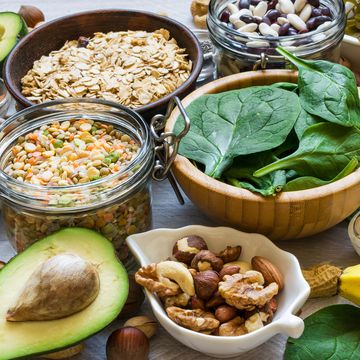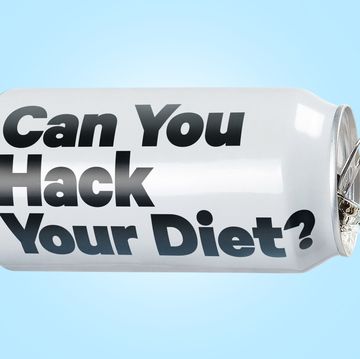Here's a riddle: what do a Twix chocolate bar and a Pizza Hut supreme pizza have in common?
Answer: they're both "low glycemic" foods. And according to many nutrition experts, that qualifies them not only as healthy but also as great diet fare.
What is all this glycemic science? A bit of background: the glycemic index (GI) ranks foods based on the impact they have on your blood sugar. So the higher a food's glycemic index, the higher it elevates the amount of glucose coursing through your veins.
The idea is that this overload of glucose leads to wild swings in blood sugar (it goes up, then comes crashing down), which ultimately causes you to crave more carbs. As a result, you overeat, or at the very least feel deprived from denying yourself, say promoters of the glycemic index.
(Related: How to feel fuller for longer)
What's more, they argue that high blood sugar triggers the release of insulin, a hormone that helps lower blood-glucose levels, but that also signals your body to store fat.
This has led to the differentiation between good carbs and bad carbs. The good carbs are said to be low glycemic, meaning they break down slowly, which keeps blood sugar and insulin levels more stable and holds hunger at bay; the bad carbs are high glycemic and do the opposite.
All of which sounds smart, of course, but don't put Pizza Hut on your speed dial just yet. Turns out, the science of the glycemic index isn't that simple – and in fact, it's even a little sketchy.
The first law
Let's say you decide to eat based on the glycemic index. So when given a choice, you'll choose the foods with the lowest GIs. Now consider these GI facts.
1. Both pound cake and fizzy drinks have a lower GI than watermelon.
2. Chocolate ice cream has a lower GI than a parsnip.
3. The GI of a Twix bar is lower than that of all the foods we just mentioned.
According to this analysis, you should opt for a Twix over a slice of watermelon. A fizzy drink would be better, too. Intuitively, of course, that doesn't make sense. After all, per serving, the watermelon is lower in calories and higher in essential nutrients than the Twix. And, well, it's fruit – not junk.
(Related: Boost your breakfast with eggs)
What gives? It's simple: the glycemic index doesn't compare real-world portion sizes. You see, the GI of a food is determined by giving people an amount that provides 50 grams of digestible carbohydrates, which include starch and sugar but not fibre.
This is the amount of carbs in about three-quarters of a king-size Twix. However, you'd have to eat 5 cups of diced watermelon to match that number – not exactly an apples-to-apples comparison. So even though eating a lot of watermelon may raise blood sugar dramatically, a single serving of the fruit has significantly less sugar than a chocolate bar.
Your takeaway: A food's ranking on the glycemic index doesn't necessarily indicate whether it's a good or bad choice. As a general rule of thumb, whole foods – such as produce – are superior to their processed counterparts, regardless of where the items fall on the glycemic index.
The fitness factor
Another surprise: the glycemic index of a food isn't a set number. University of Toronto scientists found that the value can vary by 23% to 54% from person to person. What's more, it can also differ within the same person. Scientists at Syracuse University discovered that a single weight-training session reduces the effect of a high-sugar drink on blood glucose by 15% for 12 hours after an intense workout.
Exercise uses the glucose stored in your muscles. And to replenish those stores after a workout, your body starts shuttling more of the glucose from your bloodstream to your muscles where it's packed away for future use. This helps reduce blood-glucose levels quickly, even after a high-sugar meal. Consider it another reason to lift weights: that extra muscle gives you a larger storage area for glucose.
Your takeaway: The more active you are and the more muscle you build, the less you need to worry about how foods affect your blood sugar. This is also why the best time to eat fast-absorbing carbs is just before, during, and right after your workout.
(Related: The quick six-pack diet)
The low-glycemic loopholes
Look on the back of a package of a king-size Twix and you'll find that it has 46 grams of sugar. How then, can it be a low-glycemic food? Three reasons.
1. Not all sugar causes spikes in blood glucose. Here's why: The nutrients you eat that have the greatest impact on your blood sugar are glucose and starch. But most sweeteners, such as sucrose (table sugar) and high-fructose corn syrup, are only about half glucose. The rest is primarily fructose, a sugar that has just a tiny effect on blood sugar. So only a portion of the sweetener in a Twix bar is high glycemic.
Your takeaway: Don't be fooled into thinking low-glycemic junk food isn't still junk. Remember, eating highly sweetened snacks is an easy way to consume the excess calories that lead to a bulging belly.
2. Fat lowers a food's GI. That's because it slows the absorption of glucose into your bloodstream. (As does fibre.) For instance, U.K. researchers found that adding full-fat cheddar cheese to a baked potato reduced the meal's glycemic index. With a Twix bar, you're eating a combination of sugar and fat, which means that your blood sugar won't rise as high after you've finished it. Fibre also slows glucose absorption: That's why bread made from whole-grain flour has a lower glycemic index than the kind made from refined flour.
Your takeaway: Go ahead, have some fat. Adding a pat of butter to a slice of whole-wheat bread or tossing some nuts onto your cereal will ensure that your blood sugar rises at a more even rate after a meal – instead of all at once. Keep in mind, though, that this is not a license to overindulge. Total calories is the most important factor in managing your weight.
(Related: Make your own fast-food)
3. The glycemic index is relative. High-glycemic foods are those with GI values of 70 and up; medium-GI foods fall between 56 and 69 on the scale; low-GI foods are at 55 and below. However, within that low-glycemic category, for instance, there's broccoli, with a GI of 0, and macaroni, with a GI of 47. A serving of broccoli contains just 4 grams of digestible carbs and 31 calories, yet it shares the same classification with this pasta, which delivers 49 grams of carbs and 221 calories.
Your takeaway: Low glycemic doesn't necessarily mean low carb. The reality is that the most dominant factor affecting how much a food raises your blood sugar is the total amount of digestible carbs you eat. When you're trying to lose weight, limit higher amounts of carbohydrates – more than 40 grams – to the hours around your workout. The rest of the time, cap your carb intake at 40 grams per meal and 20 grams per snack.
The final word
Here's the bottom line on the GI.
Unless you're having just a can of Coke, you're usually eating a mix of nutrients. That is, most meals with fast-absorbing carbs also include protein, fibre, and/or fat. (If yours don't, they should.) This makes the GI an unreliable tool, as fat and fibre both lower your blood-sugar response after you eat.
You don't need the glycemic index to make wise choices. Just eat the majority of your calories from whole foods: meat, fish, fruit, vegetables, dairy, and whole grains. This automatically eliminates the junk and provides a filling diet rich in vitamins and minerals and other healthful nutrients.
Calories are king. If you don't overeat, you'll stay lean and healthy for life. So a diet that you find the easiest to maintain is probably the right one for you.
A version of this article originally appeared on MensHealth.com



